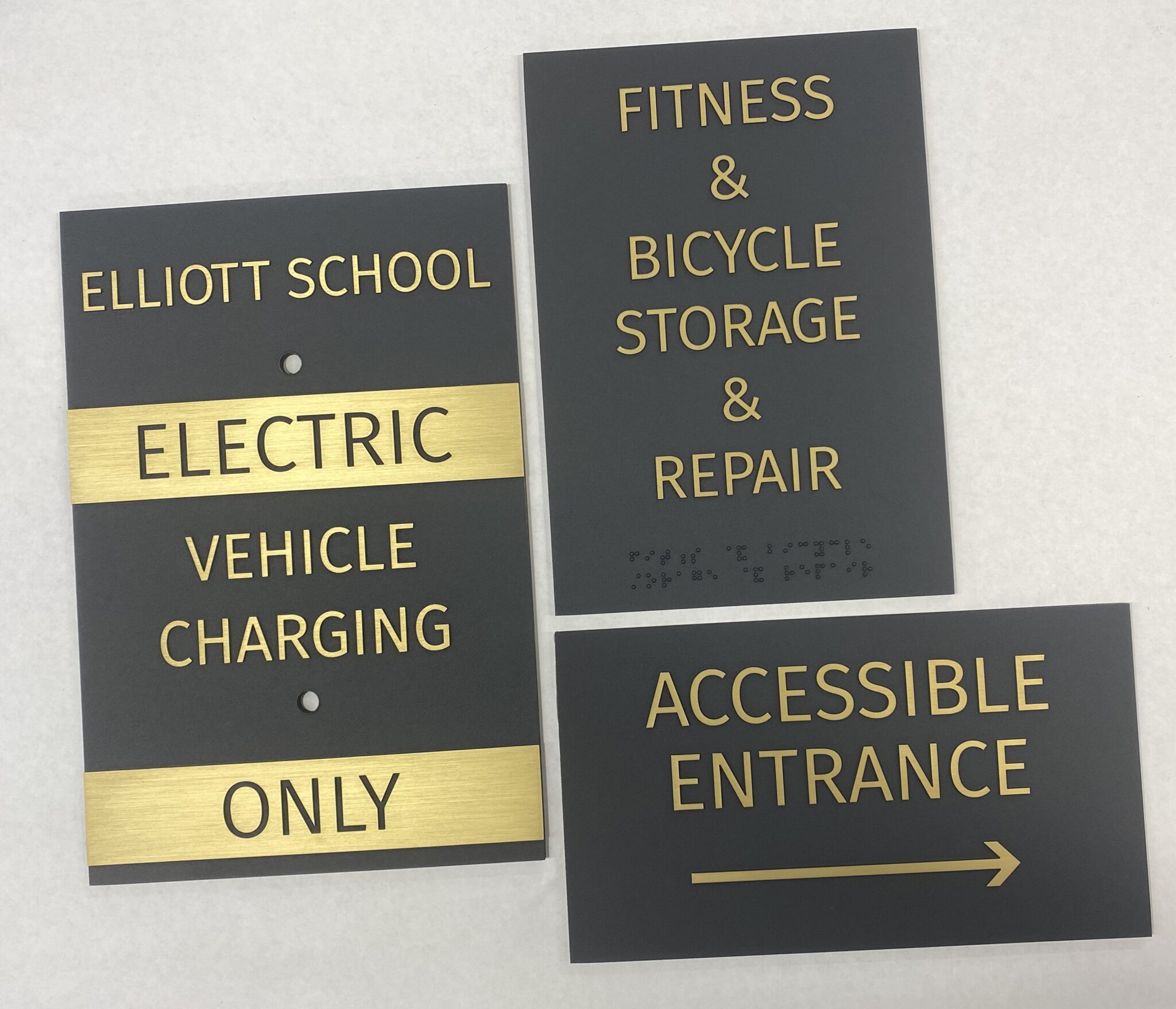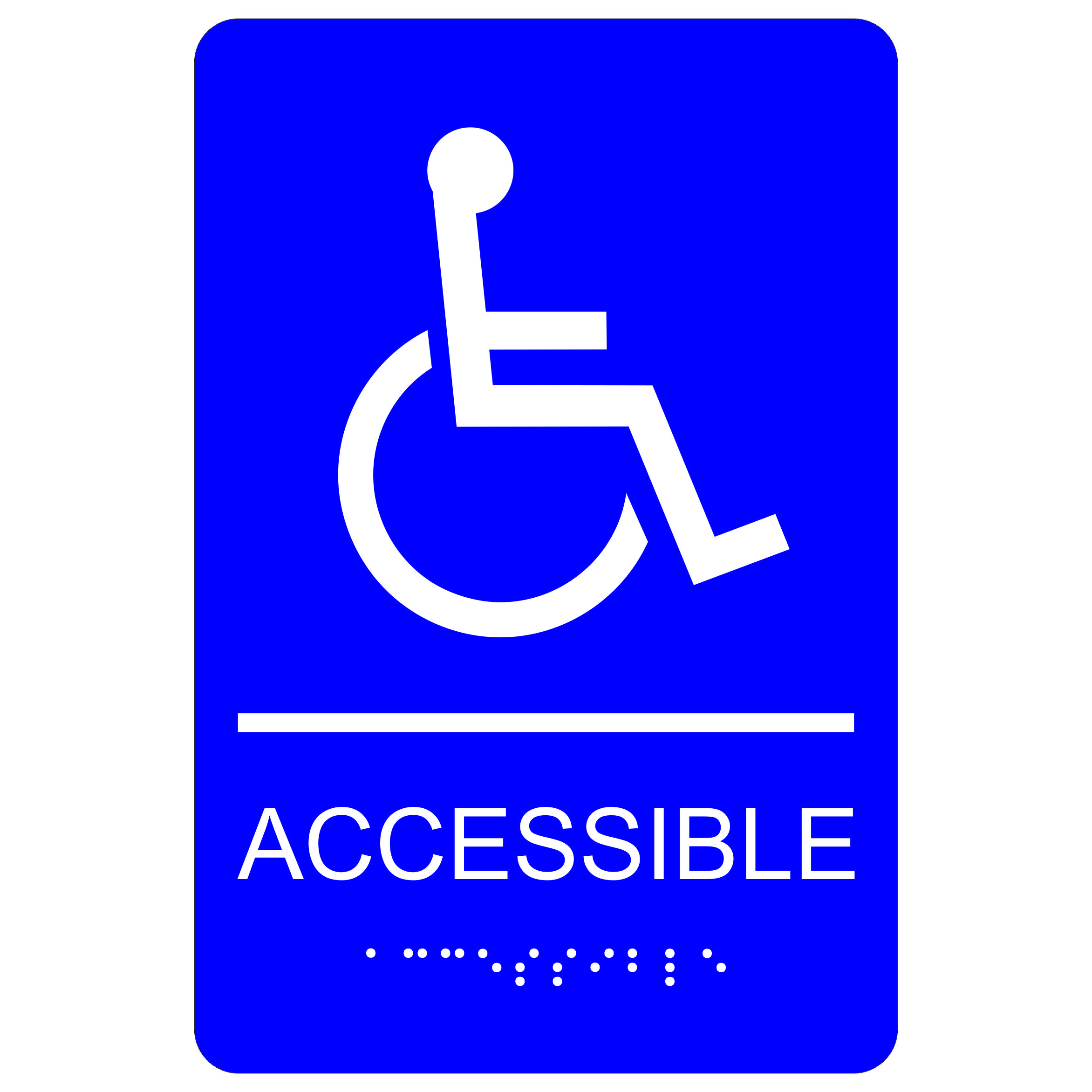Comprehending the Rules Behind ADA Signs
Comprehending the Rules Behind ADA Signs
Blog Article
ADA Signage: Making Sure Availability and Compliance in Public Spaces
ADA signs plays an indispensable function in assuring access and compliance within public rooms, considerably adding to an inclusive environment for individuals with impairments. By sticking to ADA standards, signage not only facilitates navigating however also emphasizes a company's dedication to variety and equality. As we discover the subtleties of ADA signs, from tactile features to design intricacies, it's essential to consider just how these elements coalesce to copyright the rights of all individuals. What are the usual challenges organizations encounter in keeping compliance, and exactly how can future patterns in signage continue to drive access onward?
Relevance of ADA Signs
In contemporary society, the value of ADA signage extends past mere conformity with legal mandates to embody a dedication to inclusivity and accessibility for all people. These indicators are vital in producing settings where individuals with specials needs can navigate public rooms with the same convenience and freedom as those without impairments. By giving clear and standard information, ADA signs makes certain that every person can access facilities, services, and information without obstacles.
The value of ADA signs lies in its ability to improve the quality of life for individuals with specials needs by advertising equal access. It eliminates the barriers that could or else prevent their capability to participate totally in area life. Furthermore, these indicators function as noticeable signs of a company's commitment to diversity and equal rights, mirroring more comprehensive societal worths that promote the legal rights and dignity of all people.
Additionally, ADA signs plays a critical duty in public security. By assisting people to leaves, bathrooms, and other necessary facilities, it makes certain that all people, regardless of physical capacity, can leave safely throughout emergency situations. In summary, ADA signs is not just a governing need however an effective tool for cultivating a equitable and comprehensive society.
Crucial Element of Conformity

Positioning is essential; indications must be set up in locations that are conveniently visible and obtainable. Usually, signage needs to be mounted in between 48 and 60 inches from the ground to make sure ease of access for both standing and mobility device individuals. Responsive components, such as Braille, are necessary for individuals with aesthetic impairments, providing essential information in a non-visual format.
High-contrast shades in between the text and background are needed to boost readability for people with reduced vision. The ADA mandates details contrast proportions to ensure quality. In addition, character dimension is a crucial factor to consider, with minimum elevation requirements dictated by the seeing range to guarantee readability from different angles.
Style Considerations for Accessibility
Creating easily accessible signage needs a precise technique to guarantee it fulfills the requirements of all individuals, particularly those with handicaps. The dimension of the text is similarly vital, with ADA standards suggesting a minimal height based on checking out distance to make sure legibility.
Contrasting shades between text and background are crucial for exposure, specifically for individuals with visual impairments. Additionally, tactile elements, such as Braille and increased personalities, are important for individuals who are blind or have low vision.
In addition, the positioning of signs plays a significant role in accessibility. Signs need to be installed in locations that are easily reachable and unhampered. Guaranteeing that signage is installed at ideal elevations and angles makes it possible for all customers, including those making use of wheelchairs, to communicate with them properly.
Typical Mistakes to Stay Clear Of

An additional prevalent mistake is the inaccurate placement of signage. ADA standards define precise height and place needs to ensure that signs are reachable and conveniently noticeable by all individuals, including those making use of wheelchairs. Ignoring these guidelines not only obstructs access but likewise runs the risk of non-compliance with legal requirements.
In addition, not enough contrast in between message and background is a frequent oversight. Adequate comparison is important for readability, specifically for individuals with low vision. Developers sometimes choose shades that are visually attractive however do not have the necessary contrast, making the message challenging to recognize.
Lastly, some designers stop working to include tactile elements, such as Braille, which are crucial for people who are blind. Omitting these features not only leads to non-compliance with ADA policies yet likewise restricts accessibility for a section of the population that relies upon tactile details.
Future Trends in Signage
Advancements in modern technology and raising understanding of inclusivity are forming the future fads in signage style. Digital signage, for instance, is progressing to consist of interactive functions and real-time updates, which can be essential in supplying vibrant info in public spaces.
Another emerging fad is the application of increased truth (AR) to boost user experience. AR-enabled signage can overlay electronic details onto the physical atmosphere, providing aesthetically impaired people with auditory or haptic feedback. ADA Signs. This modern technology not just improves availability but also produces an interesting experience for all users
Sustainability is likewise a substantial factor affecting signs fads. Environment-friendly products and energy-efficient lighting options are being focused on to align with worldwide environmental goals. Additionally, developments in products scientific research are leading to the advancement of more durable and weather-resistant signs.
Verdict
ADA signage plays a crucial duty in ensuring accessibility and compliance within public spaces by incorporating tactile components, high-contrast colors, and calculated positioning. The adherence to ADA criteria not only helps with safe navigating for people with disabilities but additionally symbolizes an organization's dedication to diversity and inclusivity. By preventing usual mistakes and welcoming future trends, public rooms can proceed to progress these values, ensuring that the legal rights and dignity of all individuals are valued and upheld.
ADA signage plays an important function in assuring availability and conformity within public areas, dramatically adding pop over to these guys to an inclusive environment for people with impairments. As we check out the nuances of ADA signage, from tactile features to make details, it's critical to consider exactly how these components coalesce to maintain the rights of all users.In contemporary culture, the relevance of ADA signs check this expands past mere compliance with legal mandates to personify a commitment to inclusivity and ease of access for all individuals. By providing standard and clear details, ADA signage ensures that everyone can access centers, services, and details without obstacles.
ADA signs plays an essential duty in ensuring access and conformity within public areas by integrating responsive components, high-contrast shades, and critical positioning. (ADA Signs)
Report this page